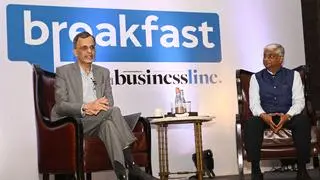Power Ministry on January 15said that consumers with more than a specified quantum of load and Energy Storage Systems (ESS) are allowed to establish, operate and maintain dedicated transmission lines themselves without the requirement of a licence.
By allowing such a facility, a new category of bulk consumers would emerge in the country, benefiting from more affordable electricity and enhanced grid reliability. This facility was already available to generating companies and captive generating stations, the Ministry said.
Power Minister R K Singh said that doing away with the requirement of license for dedicated transmission lines for industry will lead to ease of doing business for the industry, leading to faster industrial growth and more job creation.
This, along with rationalisation of open access charges will lead to faster adoption of renewable energy by the industry, thus, reducing emission, he added.
The Minister pointed out that Centre has brought down the losses of the Discoms (distribution company) from 27 per cent in 2014, to 15.41 per cent in 2022-23 and these rules will ensure that their losses are further reduced and their viability increases; leading to them having able to provide better services to the consumers.
Open access
The new rule prescribes that a Genco (generating company) or a person setting up a captive generating plant or an ESS or a consumer having load of not less than 25 Megawatt (MW) in case of Inter State Transmission System (ISTS) and ten MW in case of Intra-State Transmission System shall not be required to obtain licence for establishing, operating or maintaining a dedicated transmission line to connect to the grid, if such company or person or consumer complies with the Regulations, technical standards, guidelines and procedures issued under the provisions of the Act.
Due to very high Open Access charges levied by some state regulators this facility could not be utilised by the consumers to the desired level. To rationalise the open access charges new rules have been prescribed with methodologies for determining various open access charges like wheeling charges, state transmission charges and additional surcharge.
The rule prescribes that for a person availing General Network Access or Open Access, the additional surcharge shall be linearly reduced and get eliminated within four years from the date of grant of General Network Access or Open Access.
It is also provided that the additional surcharge shall be applicable only for the Open Access Consumers who are or have been consumers of the concerned Distribution licensee. Thus, a person who has never been a consumer of the Distribution licensee would not have to pay additional surcharge.
Financial stability
To ensure financial sustainability of the power sector, it is necessary that the tariff is cost reflective and all the prudent costs are allowed. However, some state regulators had created a large revenue gap leading to financial distress to the Discom due to disallowance of various costs incurred including even power purchases costs.
New rules are notified to ensure that revenue gap is not created except in extraordinary circumstances like natural calamity and to provide for time bound liquidation of the gaps created, if any.
The rule mandates that the tariff shall be cost reflective and there shall not be any gap between approved Annual Revenue Requirement and estimated annual revenue from approved tariff except under natural calamity conditions. Such gap, created if any, shall not be more than three per cent of the approved Annual Revenue Requirement.
For a revenue gap existing at the time of promulgation of the rules, it is mandated that any such gap, on the date of notification of these rules, along with the carrying costs at the base rate of Late Payment Surcharge shall be liquidated in maximum seven numbers of equal yearly instalments starting from the next financial year.








Comments
Comments have to be in English, and in full sentences. They cannot be abusive or personal. Please abide by our community guidelines for posting your comments.
We have migrated to a new commenting platform. If you are already a registered user of TheHindu Businessline and logged in, you may continue to engage with our articles. If you do not have an account please register and login to post comments. Users can access their older comments by logging into their accounts on Vuukle.